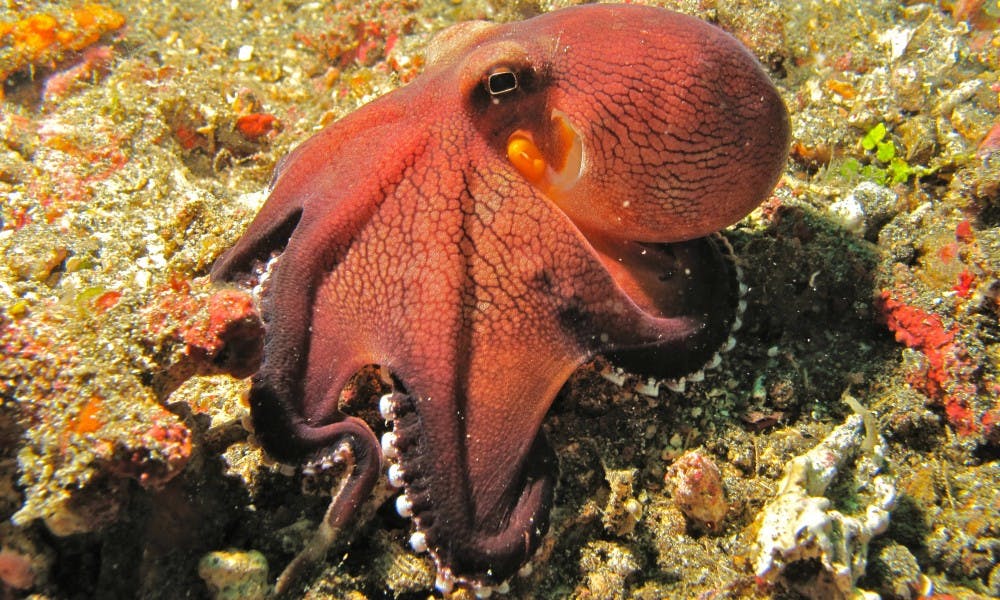Scientists have found preliminary evidence that humans and octopuses have an evolutionary link that diverged over 500 million years ago. Serotonin receptors conserved in the brains of both octopuses and humans show that they both exhibit similar behaviors.
Serotonin receptors are the primary binding sites for MDMA, a psychoactive drug more commonly known as ecstasy. Ecstasy increases energy, empathy and sociability in humans.
The study, published in Current Biology, was led by Gül Dölen and Eric Edsinger. Dölen is an assistant professor of Neuroscience at the Hopkins School of Medicine. Edsinger is a research fellow at the Marine Biological Laboratory, a nonprofit institution affiliated with the University of Chicago.
Scientists administered ecstasy to the octopuses, and a behavioral analysis and analysis of the octopus genome following the administering of the drug revealed the evolutionary link between humans and octopus.
Normally octopuses are asocial animals with a few exceptions.
“Octopuses will suspend their antisocial behavior for mating, for example. Then, when they are done mating, they go into aggressive, asocial mode,” Dölen said in a press release.
The pattern of asocial behavior led Dölen, whose research interests lie in the evolution of social behavior, to believe that genetics was the underlying factor. Dölen and Edsinger analyzed the genome of the Octopus bimaculoides. Edsinger’s research with the O. bimaculoides has been ongoing; he was on the team that sequenced the first octopus genome in 2015.
After analyzing the genome, researchers discovered that octopuses have nearly identical genomic codes to humans for the transporter that binds serotonin to the neuron’s membrane.
The scientists also studied the behavioral changes once the octopus was administered ecstasy.
To quantify octopus social behaviors, the scientists adapted an experimental technique commonly used to determine social behavior in rodents. A glass aquarium was partitioned into three chambers: an empty one, one containing a plastic novel object, and another containing a female or male octopus.
Before treatment, scientists placed the octopus in the aquarium and set the observed social behaviors as the baseline values.
Then they placed the octopus in an ecstasy bath for 10 minutes, and observed the social behaviors again.
Compared to baseline social behaviors, the octopus spent more time around the chamber with the female or male octopus. But the number of seconds spent around a particular chamber was not the only metric, according to Dölen.
“It’s not just quantitatively more time but qualitative. They tended to hug the cage and put their mouth parts on the cage. This is very similar to how humans react to MDMA; they touch each other frequently,” Dölen said.
The results still need to be replicated, but the implications of this preliminary study are still significant, according to Edsinger.
“A human is a massively complex system and if you just look within that system, it is hard to know what is relatively important. But if you compare it to the genomes of other animals, you can find the critical elements that evolution just hasn’t been able to change over millions of year,” Edsinger said in a press release. “From a pharmacological or medical standpoint, these are the elements — such as this serotonin transporter — that may be really important to make sure are functioning correctly.”
It also enables the testing of the effects of drugs on a non-human brain, which can then be generalized to humans.
“We need to be taking full advantage of these compounds to see what they’re doing to the brain,” Dölen said, according to the New York Times.





